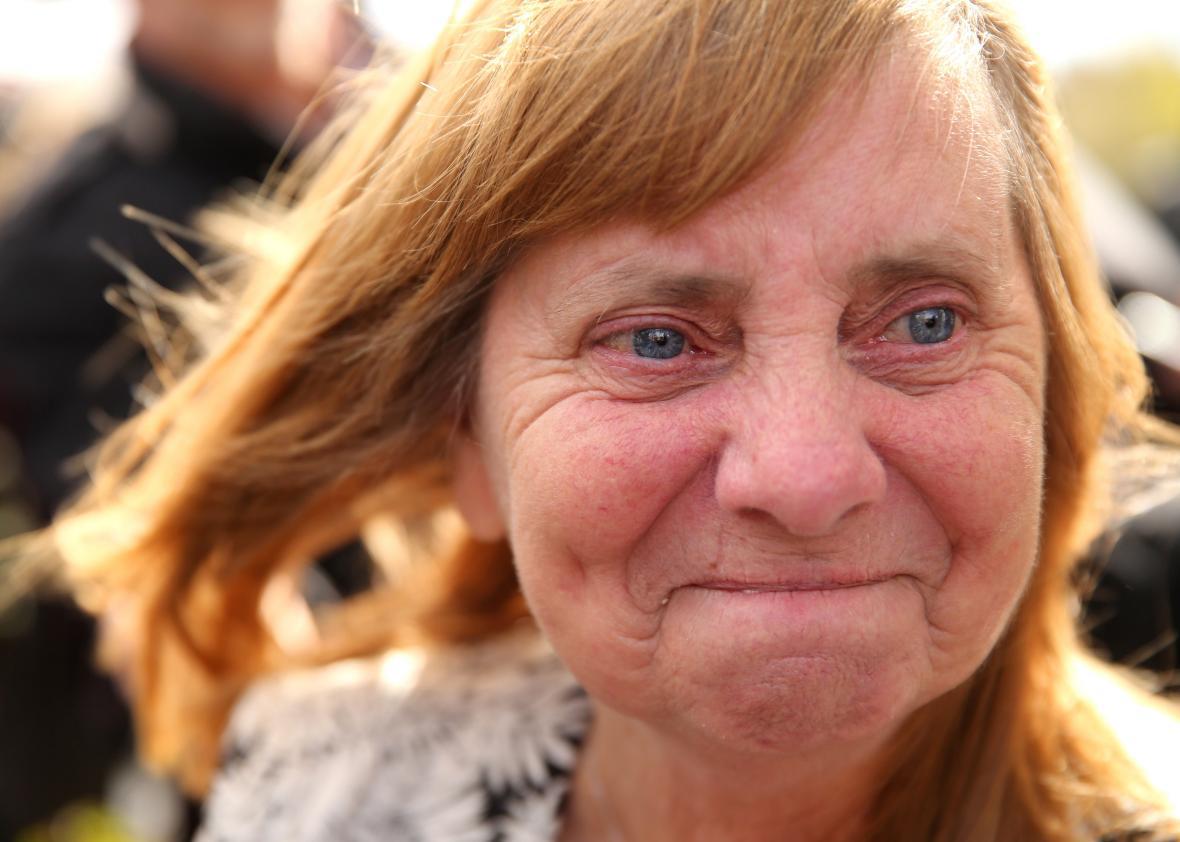It was the culmination of the longest jury trial in British history and also one of the country’s most significant cases. On Tuesday, a jury determined that the 96 people who lost their lives in England’s infamous Hillsborough stadium disaster in 1989 were killed unlawfully because of “gross negligence” by the police and flaws with the stadium design.
The case has been a national drama on the scale of, say, the Black Sox scandal, except with dozens of lost lives and scores of injuries. It led to dramatic changes to how the sport of soccer itself was experienced in England, with standing room terraces being replaced by all-seat stadiums as a direct result of the incident.
Imagine if during the 1989 NFC Championship game between the San Francisco 49ers and the Chicago Bears, nearly 100 people had been crushed to death because they had been packed into Soldier Field too tightly.* Imagine, then, if the police, public officials, and the New York Post had vilified those fans for drunken behavior that they claimed caused the deaths, when in fact it was police that had made fatal errors. Finally, imagine it took nearly three decades for a jury to find that police narrative to have been false (this new jury inquest began a little more than two years ago).
This is essentially what happened in the Hillsborough disaster. Here’s how I summarized the case in Slate in 2012:
On April 15, 1989, the sport hit a new low point at an FA Cup semifinal between Liverpool and Nottingham Forrest at Hillsborough Stadium. Because of traffic jams on the road from Liverpool to Sheffield, streams of Liverpool fans arrived late to the game. Hillsborough Stadium did not have enough stewards to manage the rush of fans. Thousands of Liverpool supporters were hurried though gates into overcrowded standing-room terraces that were then typical of English football stadiums. Once those terraces were well beyond capacity, the fans were sent into holding “pens.” The pens quickly became dangerously packed as the rush of fans continued.
Eventually, protective barriers between the fans gave way and scores of people were pressed against each other, causing a fatal “crush.” Ninety-six people lost their lives, many dying from asphyxiation.
Top police and political officials attempted to scapegoat Liverpool supporters. Rupert Murdoch’s tabloid the Sun, citing false reports from anonymous sources in the South Yorkshire Police force and Parliament, claimed that Liverpool fans had robbed the dead, urinated on them, and prevented police and emergency services from doing their jobs.
Now the jury of six women and three men have found the exact opposite, unanimously concluding that the fans had not “caused or contributed to the dangerous situation” that led to the deaths and deciding by a 7–2 margin that, in fact, those who died in the disaster were “unlawfully killed.” The jury also found unanimously that there was “error or omission by the police which caused or contributed to the loss of lives in the disaster.”
The verdict was also the culmination of a lengthy campaign by a group of victims’ families to not only clear the names of fans but get some official acknowledgment of negligence on the part of officials that day. From the Guardian:
Margaret Aspinall, chair of the Hillsborough Family Support Group, whose 18-year-old son James died in the disaster, said on Tuesday that she had refused in 1991 to pick up her son’s death certificate showing the original inquest’s verdict of accidental death.
This wasn’t a criminal case, so it will not result in anyone going to jail. But in order to rule it an “unlawful killing” the jury had to determine that the police officer in charge of security that day, David Duckenfield, was in breach of his duty to care for those in the stadium and that his actions were a case of “gross negligience” that led to the deaths. More from the Guardian:
The Crown Prosecution Service, meanwhile, said it was cooperating with two investigations into possible criminal offences committed by police officers and others leading to the Hillsborough deaths, and the alleged police cover-up afterwards.
That could lead to a prosecution of Duckenfield, who was appointed only 19 days before the game, replacing an experienced match commander.
Duckenfield opened a large gate to allow 2,000 supporters trapped in a crush outside the Leppings Lane turnstiles into the ground. The jury found that he should have ordered the closure of the tunnel that led to central “pens” three and four, but he did not, and the incoming supporters went into those pens where the overcrowding caused the crush that killed 96 people and caused more than 400 others to be taken to hospital.
The New York Times reports that Duckenfield, who is now 71, had previously falsely claimed that spectators had opened that gate.
British Prime Minister David Cameron issued a statement saying “families and survivors now have official confirmation of what they always knew was the case—that the Liverpool fans were utterly blameless for the disaster that unfolded at Hillsborough.”
After the verdict was announced, victims’ family members gathered outside the courthouse and began to spontaneously sing Liverpool’s anthem, “You’ll Never Walk Alone.”
*Correction, April 26, 2016, at 12:45 p.m.: This post originally misidentified the San Francisco 49ers as the San Francisco Giants.
